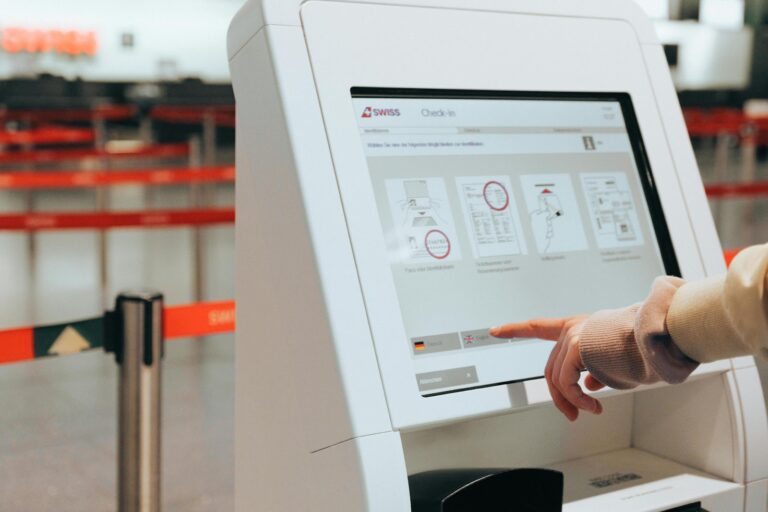The retail and hospitality industries are evolving at an unprecedented pace, driven by technological advancements and shifting consumer preferences. At the heart of this transformation is the rise of digital ordering kiosks—a solution revolutionising how businesses operate and how customers interact with services.
In this article, we’ll explore the transition from traditional tills to digital ordering kiosks and why this shift is reshaping the landscape of modern commerce.
The Evolution of Ordering: From Tills to Kiosks
For decades, tills were the cornerstone of customer transactions. Staff-operated cash registers provided a personal touch but came with limitations, such as slower service during peak hours and human error in order processing.
Enter digital ordering kiosks. These sleek, interactive systems are replacing traditional tills in restaurants, retail stores, and even cinemas, offering a faster, more accurate, and highly efficient alternative. With their intuitive interfaces and wide-ranging capabilities, kiosks are paving the way for a tech-driven customer experience.
Why Digital Ordering Kiosks Are Taking Over
1. Speed and Convenience
In a fast-paced world, customers value quick and hassle-free service. Digital ordering kiosks reduce queues by enabling multiple customers to place orders simultaneously. This efficiency is especially beneficial in busy environments like fast-food chains and shopping centres.
2. Improved Order Accuracy
Kiosks allow customers to input their preferences directly, eliminating the risk of miscommunication between staff and patrons. Features such as allergen filters and detailed product customisation ensure orders are accurate and tailored to individual needs.
3. Enhanced Customer Experience
From dynamic visuals to personalised recommendations, digital ordering kiosks offer an engaging experience. They empower customers to explore menus, promotions, and product details at their own pace, enhancing satisfaction and reducing pressure on staff.
4. Operational Efficiency
By automating routine tasks like order-taking and payment processing, kiosks free up staff to focus on more complex customer interactions. This not only improves service quality but also boosts employee productivity.
Industries Embracing Digital Ordering Kiosks
Hospitality
From fast-food giants to boutique cafes, digital ordering kiosks are becoming a staple in the hospitality sector. They enable customers to customise meals, view nutritional information, and pay seamlessly—all from one device.
Retail
In retail settings, kiosks streamline processes like self-checkout, click-and-collect, and inventory searches. These features are especially popular in supermarkets and large department stores.
Entertainment
Cinemas and theme parks are leveraging kiosks to handle ticket bookings and concessions, reducing waiting times and enhancing the overall experience for visitors.
Challenges of Transitioning to Kiosks
Despite their advantages, digital ordering kiosks come with challenges:
- Initial Investment Costs: Setting up kiosks requires significant upfront expenditure, which can be a barrier for smaller businesses.
- Accessibility Concerns: Businesses must ensure kiosks are user-friendly for all customers, including those with disabilities or limited tech proficiency.
- System Maintenance: Regular updates and troubleshooting are necessary to keep kiosks functional and secure.
The Future of Digital Ordering Kiosks
As technology continues to advance, digital ordering kiosks are becoming smarter and more versatile. Features like voice recognition, AI-driven personalisation, and cashless payment options are making kiosks indispensable for businesses seeking to stay competitive.
Moreover, sustainability is likely to play a larger role in kiosk design. Innovations such as energy-efficient hardware and paperless receipt options will help businesses align with eco-conscious values.
Conclusion
The transition from tills to digital ordering kiosks marks a pivotal moment in the evolution of commerce. These devices are more than just a convenience—they’re a strategic tool that enhances customer satisfaction, streamlines operations, and future-proofs businesses in an increasingly tech-driven world.
As digital ordering kiosks continue to gain traction, it’s clear that the days of the traditional till are numbered. For businesses, embracing this technology is not just an option; it’s a necessity for thriving in the modern market.

